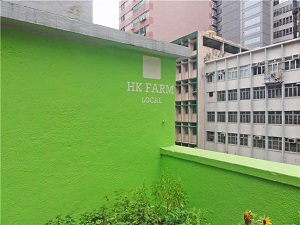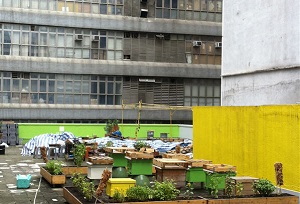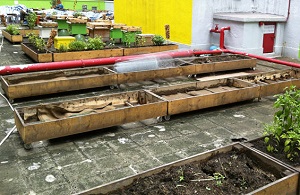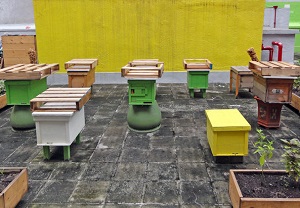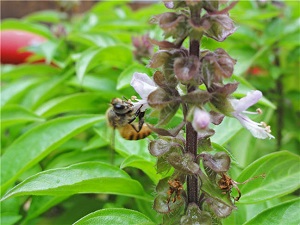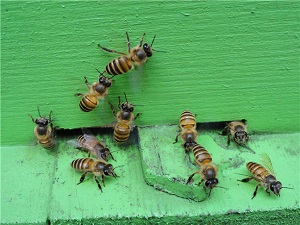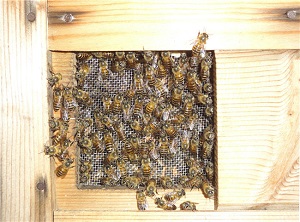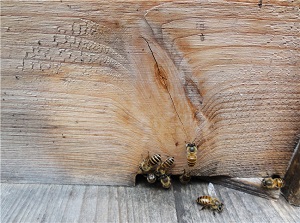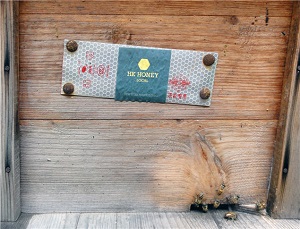
In Search of Honey and Bees in Hong Kong
It was such a privilege to be able find local honey and bees in Hong Kong, the cosmopolitan centre of China and one of the most urbanised cities in Asia.
I was told there were only several beekeepers left in the countryside, so it was really cool to be able to connect with an old couple from the Wing Wo Bee Farm in Shatin, N.T. They were really friendly enthusiastic beekeepers (who were not aware of the exposure they could get through my website), but it was a shame that I didn't understand their language, Cantonese, which was a big barrier in trying to get the answers to all my questions about their bees and honey. But with some translation and observation of their body language, I was certain that they were genuine, passionate and honest beekeepers. (Well, I have to say not all the beekeepers whom I have met appear to be happy with what they are doing and are willing to share their knowledge with strangers.)
There was a big collection of bee hives in their compound and from where their house stood, I could clearly see the dense green forest on the mountain miles away, and knowing where the bees collected the nectar from and where exactly the honey came from was an awfully good feeling.
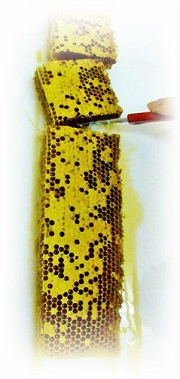
It was my first time to be surrounded by thousands of buzzing Chinese bees, aka Apis cerana (nervous!) and to see so many fresh honey-dripping combs (mouth-watering)!
The beekeepers displayed an empty honeycomb which the bees had absconded with the honey, demonstrated how part of the honeycomb could be constructed and repaired with a beeswax sheet, pointed out the queen bee in the colony, and showed us the difference between matured honey and unstable honey that has an excessively high level of moisture.
As expected by many of you, bringing home bottles of the honey marked the finale of my visit, as usual. And I am so glad to leave the place with no bee stings!
Enjoy the gorgeous images I have put together below. Cheers.
Ruth Tan
9 June 2012
PS: I probably got all of the floral varietals of honey in Hong Kong. The winter honey is rich and heady, bursting full of the aroma of the ap geuk mok trees which can be only found in the mountains, the spring honey has distinct flavors of longan and lychee, the summer honey from the wu kau flowers is relatively milder but no less flavorsome. And I even got a varietal that is of medicinal grade! Those Chinese bees in Hong Kong make FANTASTIC tasting honey! That trip will definitely not be my last one. Should you be planning a trip to Hong Kong and love to taste the honey and see the bees there, here is the address of the Wing Wo Bee Farm: 136, Pai Tau Village, Shatin, New Territories. It is just 10-15 minutes’ walk on the hilly paths from the Shatin MTR.
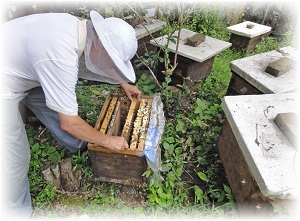
Urban Beekeeping in Hong Kong
If you think beekeeping activities can exist only in villages and rural areas, away from the hustle bustle of city life and residents, Hong Kong Farm, an organisation established in 2010 to introduced urban agriculture concepts to Hong Kong's concrete landscape is going to change that mindset. Curiosity lead me to check out its tiny farm at quite an unlikely venue - on the roof top of a six-storey industrial building at Ngau Tau Kok, some 10 to 15 minutes walk from the Ngau Tau Kok MTR Station.
Hey, bee enthusiasts in Singapore, the pictures of the roof-top farming and Chinese bees below are going to inspire you to explore further the subject of keeping bees in Singapore! HK Farm's founder Michael Leung, who strongly advocates eating local, says that we will be in for a surprise if we always think that there needs to be a lot of flora around for the bees to bring back the honey.
Read Related Pages
1. Can We Have the Honey Bee Back, Please?
2. Keeping Bees in Singapore
3. Start Beekeeping in Singapore
4. Bee Removal in Singapore
5. John Smith's Posting on "Keeping Bees in Singapore"
6. My Honeybee Farm Visit � Picture Tells 1000 Words.
End of "In Search of Honey and Bees in Hong Kong". Back to Keeping Bees in Singapore.
